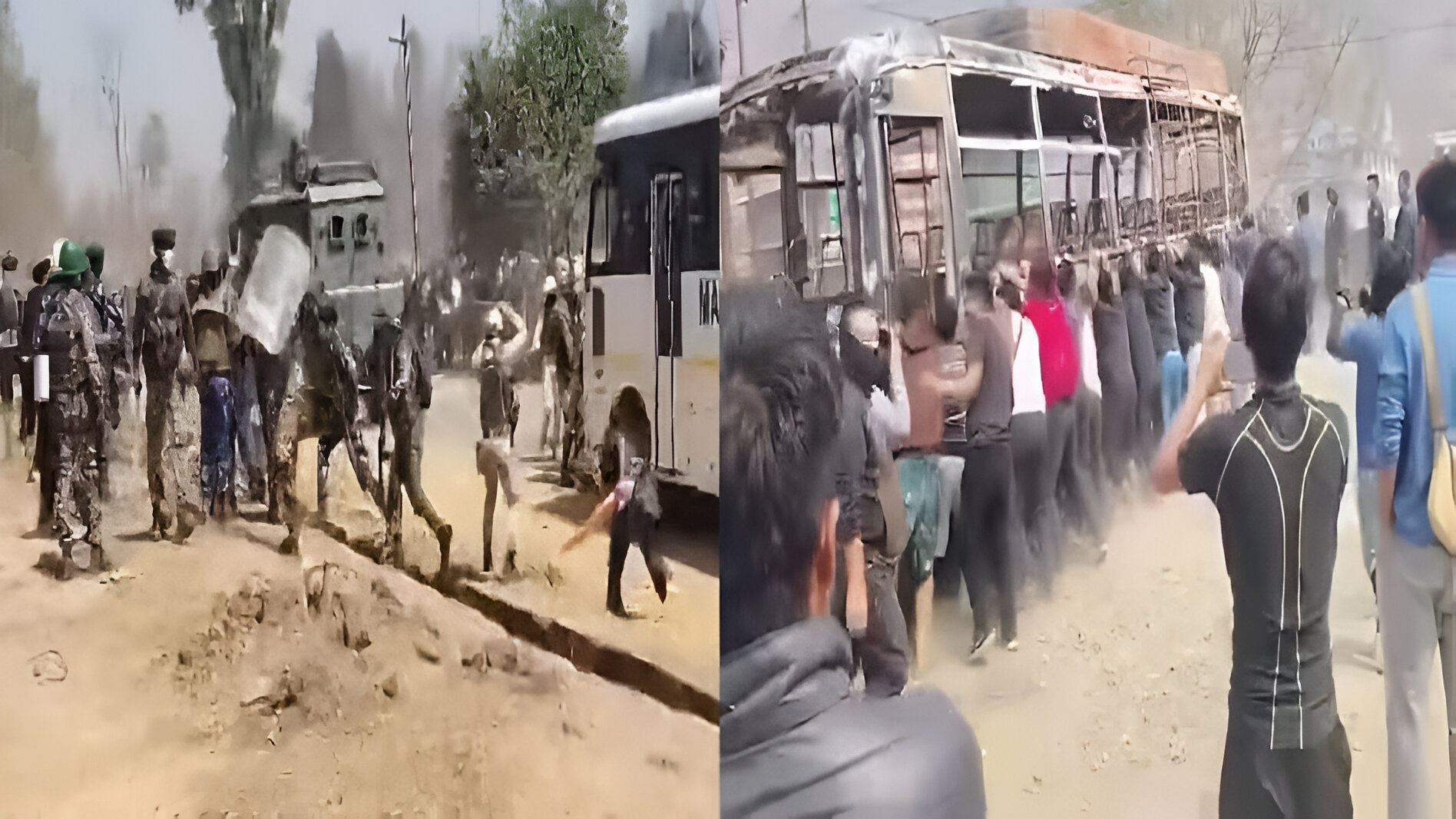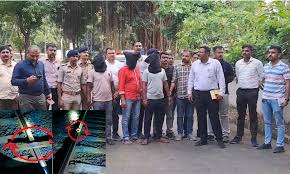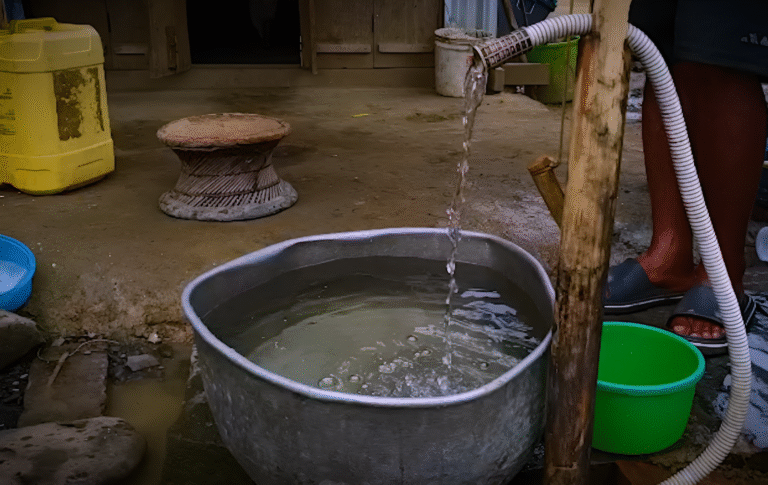Manipur Kuki-Zo Council Declares Indefinite Shutdown After Violent Clash on Day 1 of Free Movement: In-depth Analysis
Welcome to our detailed exploration of one of Manipur’s most contentious recent events. In this article, we break down the incident, the declaration by the Kuki-Zo Council, and what it might mean for the region’s future. Grab a cup of tea and join us on this deep dive into the complex world of Manipur’s free movement initiative.
Introduction
Manipur, a state known for its vibrant cultures and scenic beauty, is no stranger to turbulence when it comes to ethnic and political dynamics. Recently, the region has been thrust into the spotlight as the Kuki-Zo Council declared an indefinite shutdown after a violent clash erupted on day one of the free movement initiative. This incident is not just a singular event—it is the culmination of longstanding tensions, historical grievances, and the intricate interplay of ethnic identities that define this part of India.
Imagine living in a place where history, culture, and politics intersect in unpredictable ways. Every street corner tells a story, and every incident carries the weight of generations of experiences. That’s the essence of Manipur today.
Background of Free Movement in Manipur
The concept of free movement in Manipur was introduced with the hope of bridging gaps between various ethnic groups and fostering greater economic and social integration. On paper, it sounded like a brilliant idea—opening borders, easing restrictions, and encouraging cultural exchange. However, as with many policies that aim to balance diverse interests, the reality has been far more complicated.
Historical Context
Manipur has always been a melting pot of different ethnic groups, including the Kukis, Zos, Nagas, and many others. Each community has its own unique history, traditions, and aspirations. Over the decades, conflicts over land, resources, and political representation have simmered beneath the surface. When the free movement initiative was announced, it was met with both enthusiasm and skepticism. Many saw it as an opportunity to heal old wounds and build a unified future, while others feared it could exacerbate existing divisions.
Socio-Political Dynamics
The Kuki-Zo Council, a significant body representing a section of the region’s populace, has historically been vocal about the rights and autonomy of its community. The council’s decision to declare an indefinite shutdown was not made in isolation; it was a response to what many see as an escalation in tensions that could threaten the delicate balance of peace in the area. The idea of free movement, though promising on the surface, brought with it unforeseen challenges that quickly escalated into violence.
The Day of the Clash: What Really Happened?
On the first day of implementing the free movement policy, what was meant to be a day of newfound freedom quickly turned into chaos. Eyewitnesses describe a scenario where local disputes and historical grievances converged, leading to a violent clash that left the community deeply shaken.
Triggering Factors
So, what exactly triggered the conflict? Several factors appear to have contributed:
- Ethnic Tensions: Decades of mistrust between different ethnic communities, particularly between groups represented by the Kuki-Zo Council and others, played a significant role.
- Political Undercurrents: With the free movement initiative, many feared that political agendas were being masked by the promise of unity, and old rivalries were reignited.
- Economic Strains: Competition over limited resources in the wake of policy changes further intensified the situation. When livelihoods are at stake, even the smallest spark can ignite a wildfire.
Eyewitness Accounts and Local Narratives
Many locals recounted scenes of pandemonium where peaceful assemblies were abruptly transformed into arenas of conflict. In neighborhoods that had once been symbols of harmony, chaos now reigned. These stories are not just isolated incidents—they reflect the deep scars left by years of socio-political neglect and historical mistrust.
Imagine a bustling marketplace suddenly falling silent as tensions flare up, with neighbors turning on each other over what might seem like minor disagreements. Such is the reality in Manipur today, where the promise of free movement is being overshadowed by the harsh realities of ethnic discord.
Declaration of the Indefinite Shutdown
Following the violent clash, the Kuki-Zo Council took the bold step of declaring an indefinite shutdown. This move was both symbolic and strategic—a way of sending a clear message to all stakeholders that the current conditions were untenable.
What Does an Indefinite Shutdown Mean?
An indefinite shutdown is not merely a pause in normal activities; it is a powerful statement of dissent. It signals a refusal to participate in a system that many believe is rigged against them. For the Kuki-Zo community, the shutdown was a call for justice, demanding that their grievances be addressed and that the free movement initiative be reconsidered in light of its consequences.
Immediate Implications
- Economic Disruption: With key businesses and services halted, the local economy felt the immediate impact. Markets that once buzzed with activity were now eerily quiet.
- Social Fragmentation: The shutdown deepened the divides between communities. For many, it was a painful reminder of past conflicts, further eroding the trust that is essential for coexistence.
- Political Repercussions: The political landscape in Manipur is now more volatile than ever. With leaders scrambling to respond, the shutdown has thrown a wrench into the ongoing dialogue about reform and unity.
This decisive action by the Kuki-Zo Council can be seen as a metaphorical line in the sand—a clear declaration that the community would no longer tolerate policies that undermine their rights and dignity.
Deep Dive into the Socio-Political Impact
The repercussions of this incident are far-reaching. It is important to understand that the free movement policy, though designed to unite, has inadvertently become a catalyst for division. Let’s unpack the multi-dimensional impact of these events.
Cultural Identity and Autonomy
At its core, the conflict in Manipur is a struggle over identity. For the Kuki-Zo community, the shutdown represents a fight for cultural autonomy. There is a deep-rooted belief that policies must respect the unique traditions and historical narratives of each group. When these identities feel threatened, reactions are bound to be fierce and uncompromising.
Economic Challenges
Economically, Manipur has always walked a tightrope. The promise of free movement was seen as a potential boon—an opportunity for trade, tourism, and inter-community cooperation. However, the clash and subsequent shutdown have thrown the local economy into uncertainty. Small businesses, local vendors, and service providers are now caught in a limbo, with their futures hanging in the balance.
Consider a small family-run shop that has thrived on the regular influx of customers from different communities. Overnight, that livelihood is jeopardized as people choose to stay indoors in fear of potential conflicts. The ripple effect on the broader economy is both immediate and long-lasting.
Political Ramifications
Politically, the shutdown is a wake-up call for decision-makers in Manipur and beyond. It forces the spotlight onto the shortcomings of policies that fail to address local realities. Political leaders now face a double-edged sword: on one side, the need to uphold the vision of free movement for economic and social integration, and on the other, the imperative to safeguard the rights and identities of marginalized communities.
The situation in Manipur echoes larger national debates about identity politics, regional autonomy, and the balance between modernization and tradition. With the shutdown in place, political discourse has become more polarized, with parties and leaders taking sides based on historical loyalties and ethnic affiliations.
Voices from the Ground: Personal Stories and Community Reactions
No news article is complete without the voices of those who live the reality every day. In Manipur, personal stories offer a window into the human cost of these political decisions.
Local Residents Speak Out
Many community members expressed a mix of fear, anger, and sorrow over the violent events. One resident, who wished to remain anonymous, said, “We have always dreamed of a peaceful coexistence where our children could grow up without the fear of conflict. But today, it feels like history is repeating itself, and we are being forced to relive the dark days of division.” Such testimonies highlight the emotional toll of the shutdown and underscore the urgent need for dialogue and reconciliation.
Community Leaders and Activists
Local leaders and activists have also weighed in on the incident. They argue that the shutdown is not just about one violent day—it is a symptom of a larger systemic failure. Activists call for immediate measures to address underlying grievances, ranging from better economic opportunities to more inclusive political representation.
It’s like watching a community on the edge of a precipice, trying to pull itself back from the brink before it falls into an abyss of endless conflict. The voices of these leaders serve as a reminder that despite the chaos, there is still hope for change through collective action and meaningful dialogue.
Historical Parallels and the Road Ahead
History, as they say, often repeats itself—but it also offers lessons. By looking at similar incidents in the past, we can glean insights into the potential paths forward for Manipur.
Lessons from Previous Conflicts
Manipur is no stranger to conflict. Over the years, various incidents have underscored the importance of addressing grievances before they spiral out of control. Historical precedents show that when communities come together for reconciliation and constructive dialogue, even the deepest divides can be bridged. However, the process is often slow and fraught with setbacks.
Think of it as a delicate dance, where every step must be measured and every movement calculated. The key lies in balancing assertiveness with empathy, ensuring that no group feels sidelined or marginalized.
Potential Avenues for Resolution
Looking ahead, several steps could help ease the tension:
- Dialogue and Negotiation: Establishing open channels of communication between the different communities and political leaders is crucial. A neutral platform where grievances can be aired without fear of reprisal might just be the first step toward healing.
- Economic Revitalization: Reviving local economies through targeted development programs can help reduce the economic stresses that often fuel social unrest. When people see tangible improvements in their daily lives, the allure of divisive politics tends to diminish.
- Cultural Preservation: Initiatives aimed at preserving the cultural heritage of each community can foster a sense of pride and unity. Celebrating diversity rather than viewing it as a hurdle can transform conflict into an opportunity for mutual growth.
- Policy Reforms: The free movement initiative itself might require adjustments. By incorporating the feedback of local communities, policymakers can design reforms that are both inclusive and effective, ensuring that the policy does not inadvertently favor one group over another.
The Broader Impact on Northeast India
While the events in Manipur are localized, they resonate far beyond its borders. Northeast India has long been a region of strategic importance, with a rich tapestry of cultures and communities. The incident serves as a cautionary tale for other states facing similar challenges.
It’s like a ripple in a pond—the impact of one disturbance can spread far and wide, affecting areas that might seem unrelated at first glance. Regional stability, economic growth, and political cohesion are all at stake, making it imperative for local leaders and national policymakers to work in tandem.
The Role of Media and Public Perception
In today’s interconnected world, the media plays a pivotal role in shaping public perception. The violent clash and subsequent shutdown in Manipur have been widely covered, with various outlets offering differing narratives.
Media Narratives
Some media sources have focused on the economic and political ramifications of the shutdown, while others have highlighted the human stories behind the headlines. The challenge for readers is to sift through these narratives and find a balanced perspective that acknowledges both the immediate crisis and the deeper historical context.
A healthy skepticism is necessary—after all, every story has multiple sides. The media’s portrayal of events in Manipur is a reminder that while facts are crucial, the interpretation of these facts can vary widely based on perspective and intent.
Social Media and Grassroots Voices
Social media platforms have emerged as powerful tools for grassroots communication. In the wake of the shutdown, platforms like Twitter and Facebook buzzed with live updates, opinions, and calls for action. For many, these platforms became the lifelines of real-time information, bypassing traditional media channels.
However, the digital realm is a double-edged sword. While it democratizes information, it can also amplify misinformation and polarizing narratives. As residents of Manipur and concerned citizens elsewhere, it’s essential to critically evaluate the sources of information and seek out verified reports.
A Glimpse into the Future: What Lies Ahead?
The indefinite shutdown by the Kuki-Zo Council is both a moment of crisis and an opportunity for transformation. As the region grapples with the immediate fallout of the violent clash, the future remains uncertain but not without hope.
Rebuilding Trust and Community Bonds
Reconciliation is a long and arduous journey, but it is not impossible. The first step is acknowledging the pain of the past and taking concrete actions to mend it. Initiatives like community dialogues, cultural festivals, and joint economic ventures can serve as the building blocks for a more united Manipur.
Imagine a future where former adversaries come together to rebuild what was lost—a future where differences are celebrated rather than condemned. That is the vision that many in the region still hold dear.
The Path for Policy Makers
For policymakers, the current crisis is a stark reminder that top-down reforms must be tempered with local insights. Policies that do not consider ground realities risk not only failure but also unintended consequences that can destabilize entire communities.
In this light, a collaborative approach that involves local councils, community leaders, and ordinary citizens could pave the way for more effective governance. By aligning national ambitions with local needs, the state of Manipur could transform its challenges into opportunities for growth and unity.
Lessons for Other Regions
Manipur’s experience is a microcosm of larger debates about identity, governance, and social justice in India and beyond. It highlights the need for a more nuanced approach to development—one that recognizes that economic progress and social harmony are intertwined. As other regions observe these developments, there is much to learn from both the missteps and the hopeful initiatives emerging in Manipur.
Conclusion
The declaration of an indefinite shutdown by the Kuki-Zo Council after a violent clash on day one of free movement marks a critical juncture in Manipur’s ongoing narrative. This event, steeped in historical grievances and fueled by contemporary challenges, serves as a powerful reminder that policies—no matter how well-intentioned—must be grounded in the lived experiences of the people they aim to serve.
As we look to the future, the hope remains that dialogue, empathy, and cooperative governance will eventually prevail over division and discord. Manipur’s story is far from over, and while the road ahead may be fraught with challenges, it is also paved with opportunities for renewal and transformation. Let this incident be a catalyst for change—a call to action for community leaders, policymakers, and citizens alike to work together in building a more inclusive and harmonious society.
Frequently Asked Questions (FAQs)
Q1: What led to the declaration of the indefinite shutdown by the Kuki-Zo Council?
A1: The shutdown was declared in response to a violent clash that erupted on the first day of the free movement initiative, reflecting long-standing ethnic tensions, political undercurrents, and economic disparities in the region.
Q2: How has the free movement initiative impacted Manipur so far?
A2: While the initiative was designed to promote unity and economic growth, it has inadvertently highlighted deep-rooted divisions. The resulting conflict has disrupted daily life and raised concerns about the policy’s long-term viability.
Q3: What are the immediate economic effects of the shutdown on local communities?
A3: The shutdown has led to significant economic disruptions, including halted trade and reduced business activity. Small vendors and local businesses are particularly affected, as the sudden halt in movement has interrupted their livelihoods.
Q4: Can dialogue and policy reform help resolve the tensions in Manipur?
A4: Absolutely. Many experts and community leaders advocate for open dialogue, inclusive policy reforms, and targeted economic initiatives as key steps toward rebuilding trust and fostering long-term peace.
Q5: What lessons can other regions learn from Manipur’s current situation?
A5: Manipur’s experience underscores the importance of incorporating local realities into national policies. Other regions can learn that sustainable development requires balancing economic progress with cultural preservation and inclusive governance.



